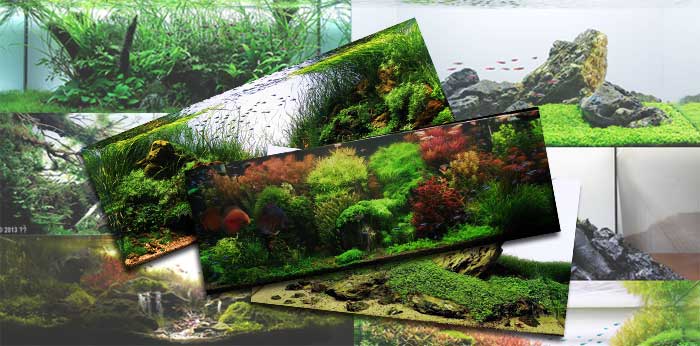Aquascaping styles developed by the world’s greatest aquascapers
This is the first installment of a series designed to not only show you today’s best aquascaping styles but also go deep-down into the how and why each is being used by aquascapers. The focus is on teaching you so that you can, in turn, put these styles to use in your aquarium.
The articles in this series are:
- Aquascaping styles for beautiful aquariums [a series] this article
- The Dutch aquascaping style – fruit stand & contest fail?
- The biotope aquascaping style – natural beauty?
- The paludarium – an aquascaping style or mutation?
- The nature aquarium style – aquascaping’s Frankenstein?
- Iwagumi aquascaping style – zen aquascaping?
- Convex aquascaping style – beautiful and safe
- Island aquascaping style – ya man!
- Concave aquascaping style – the red-headed step child?
- Triangle aquascaping style – hardwired beauty?
- The linear aquascaping style – Findley’s opus?
- Abstract aquascaping style – pushing the envelop
- Aquascaping style: 3 steps to build your own
- Aquascaping style: the end of the series
What is an aquascaping style, anyway?
Visual arts are based on human aesthetics. One aspect of aesthetics is style meaning that artistic objects satisfy rules of composition that place them in a recognizable style. Our brains are hardwired to look for patterns and prefer to group things based on similarities. So, styles in art allow us to judge, appreciate and interpret what we see.
In aquascaping, styles have evolved over time and are based on particular compositions and, originally, geography. The best aquascapers in the world (you know, those that are at the top of the big aquascaping contests) use these styles as the backbone of their aquascapes.
Aquascaping style as a blueprint for your aquarium and to appreciate other’s work
As in painting, a specific style gives the artist a blueprint from which to build. It’s now up to the artist to use his creativity, talents and skills to add life and meaning to it. The artist can even break the rules by combining styles or even come up with a unique style. This isn’t about limitations or restrictions. It’s about support and foundation and fun. It’s a springboard for creativity and genius.
In my opinion, it’s critical for you to know and understand the styles that are out there. This has two main purposes- 1) to give you a blueprint for your aquascape and 2) to allow you to better interpret the aquascapes you see. This will allow you to appreciate the work of art at a deeper level. You’ll realize the departures from a style that an aquascaper made and better understand why such departure (rule breaking) is meaningful.
I chose to write this series to learn along with you how today’s aquascaping styles are being used by the best aquascapers in the world. I, like you, want to improve my planted aquarium and make it as beautiful as I can. So, let’s start this journey of exploration and learning together. Please stay tuned for the next installment in this series that will explore and examine the beautifully unnatural Dutch aquascaping style.
I’m excited. I hope you are too!
All the best to you,
Art






One Comment on “Aquascaping styles for beautiful aquariums [a series]”
Pingback: ScapeFu018: Aquascaping Styles - ScapeFu